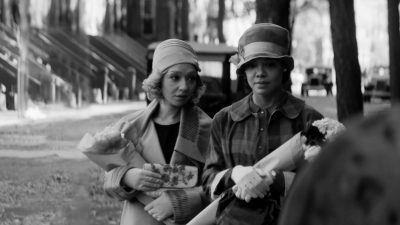Ian Trask’s Eco-Installation is More than the Sum of its Parts
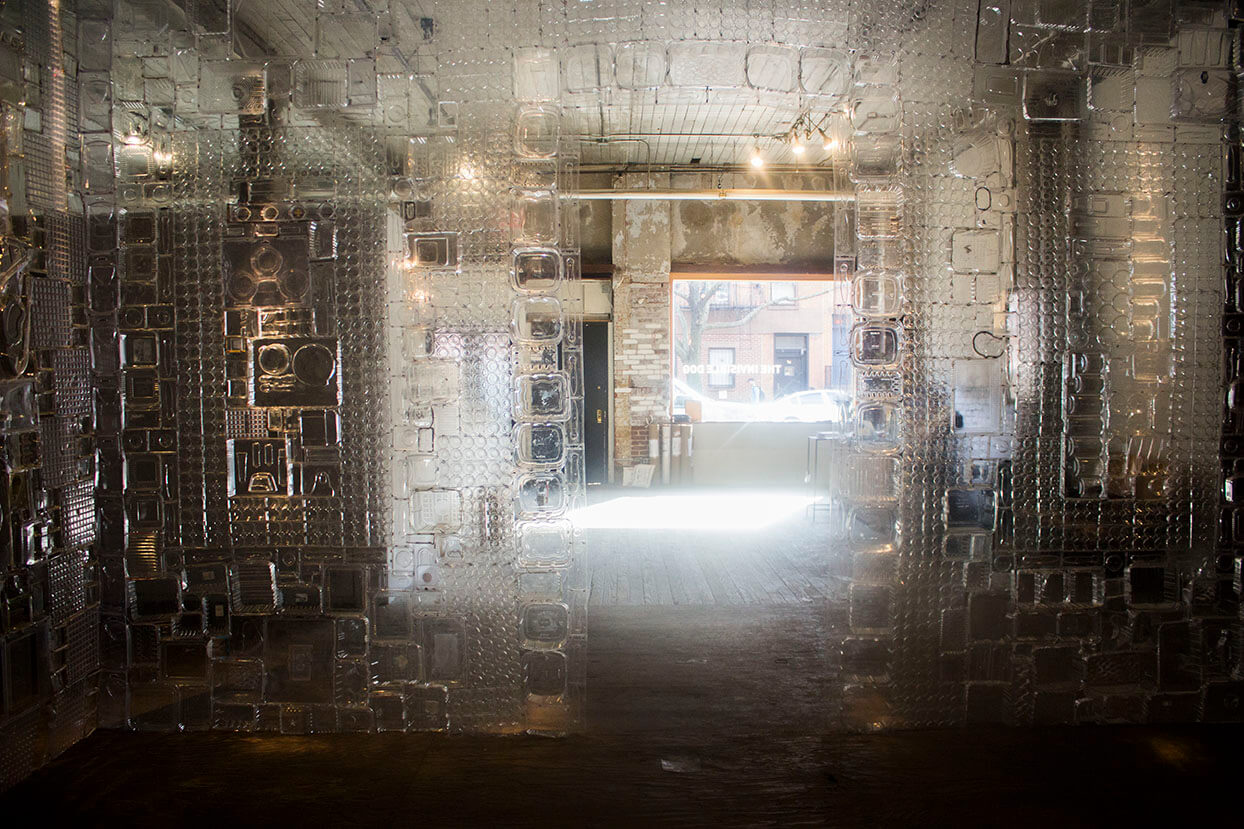

(Photos by Nicole Disser)
Ian Trask has the quiet demeanor of a research scientist—he’s soft spoken, his words are carefully chosen and precise, his tone even and calm. When I met up with him at the Invisible Dog, he seemed like he’d be much more comfortable sitting in a lab, preferably alone rather than discussing his work in a gallery. You’d have to be unusually perceptive to guess right away that Trask is actually an artist, and one whose sculptures are composed of what most people would think of as waste. His work is attracting a lot of attention from local art spaces like Pioneer Works and The Invisible Dog and though his installations are inherently collaborative efforts, they also involve Trask spending hundreds of hours alone in methodical preparation.
Trask’s latest effort Blister Pact is a massive installation housed inside The Invisible Dog in Cobble Hill and made entirely from materials that would otherwise have been discarded or (hopefully) recycled. The cube-shaped piece is composed of thousands of individual plastic packages—Trask estimates there are over 5,000—the artist had either found or saved himself or collected through donation bins set up in various locations including a high school and a factory in Sheepshead Bay. The walls of the structure extend upwards to about 16 feet and outwards even farther. It has an odd, bluish hospital glow and Trask encourages visitors to walk inside.
“It was sort of a big puzzle,” Trask explained. “It draws from this existing part of my process where I would look for and collect things. But once I ran out of space, I would cut back on my own instinct of picking things up. But as people would donate things to me, it was harder to say no to them. It was interesting that you’re hitting some mark in their head, when they see something and think of you and have this impulse to save it. They’re seeing some potential in these things that otherwise would be of no importance to them.”
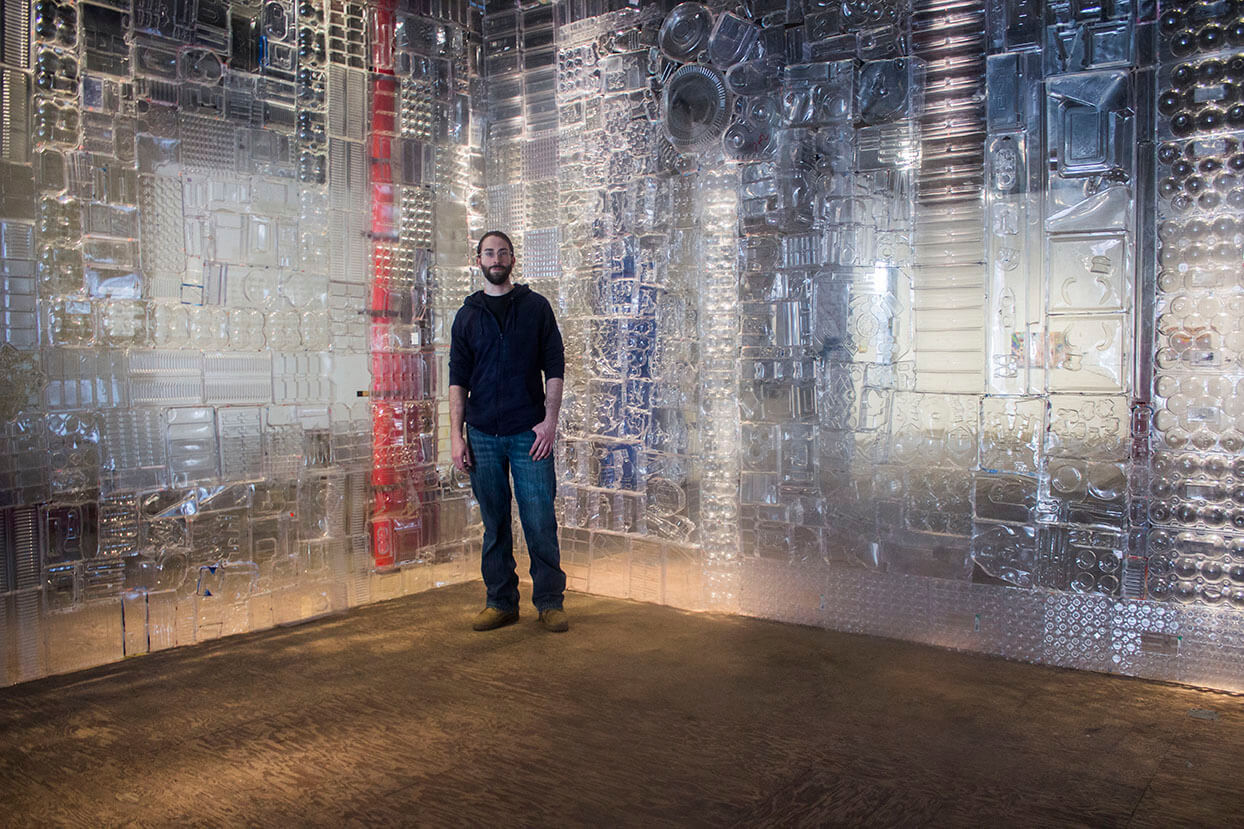

Thinking of a the installation in this way illuminates it beyond being just a enormous hunk of plastic. As Trask explains, the sculpture is really “a study of local waste.” On the surface, this installation is simply a call for people to recycle more thoroughly, but it’s really much more than that.
Like many people (including me), Trask had doubts about the efficiency of recycling in New York City. I admitted that it was hard for me to believe both that the effort of any one person in this enormous city would have a meaningful impact on recycling (though I still do it, obsessively) and that the city is actually successful at collecting all the materials that people intend to recycle. I’m not the only New Yorker who notices the inordinate amount of recyclable goods that end up on the street after trash pickup, the massive piles of garbage that are revealed when the snow melts away.
Trask explained that, as a part of his research for this project, “I felt I had to know how recycling was happening right now.” Dissatisfied with the existing literature, he arranged for tour of the Sims Municipal Recycling Facility in Sunset Park. He recounted a complex and above all accurate sorting system for recyclables from all five boroughs. “It’s pretty nuts,” he said. “I became less cynical and more optimistic about what I put in the recycling bin. Like even if this is on the fence, I would put it in, because it would just get sorted out. If you’re not sure and you don’t put it in, you never know if that could have been recycled.”
It’s this sort of delicate relationship between the existing services and free will that determines whether people will use them or not, as well as the interconnectivity of all the items we throw away or fail to recycle. “They’re thought of as contaminants,” Trask explained. “But I had one comment that it’s really fascinating to see how many other people use what we use. If you use something and you think it’s a pretty interesting shape, [looking at this installation] you’ll see that it’s not that unique and you see where your patterns overlay with other people’s patterns.”
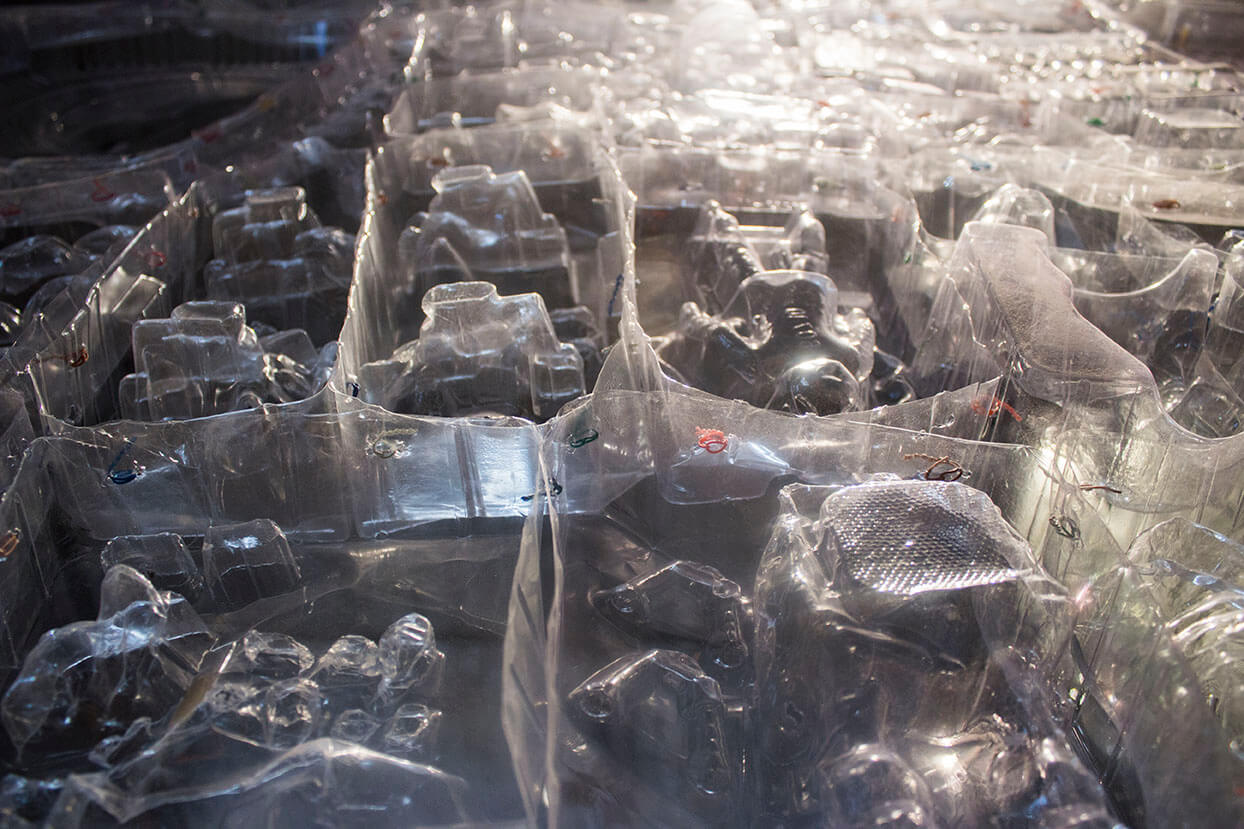

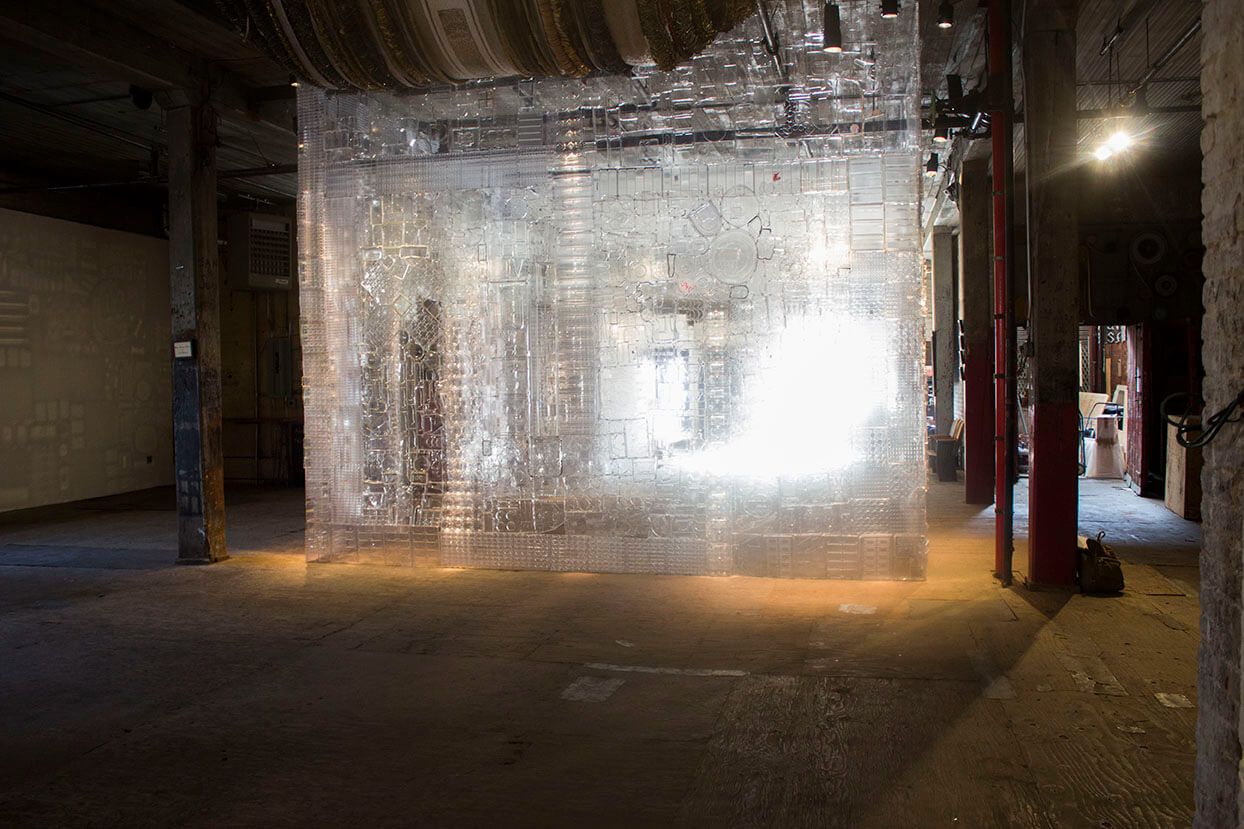

These ideas are both present in Blister Pact. From a distance, the walls might be confused for bluish bottle glass– uneven, iridescent, and delicate. On closer inspection, it’s clearly made of plastic bits carefully pieced together like a mosaic. At first, the oblique wrinkles in the material that’s obviously been used and either tossed out and recovered, stepped on and ripped, make the plastic pieces look almost melted together. Get even nearer though and tiny, colorful strings become perceivable. “It’s stripped ethernet wire,” Trask explained, another material he collected from donations.
Before devoting all of his time to his career as an artist, Trask was working at a genetics lab in Salt Lake City. He’d graduated with a degree in biology and had gone through all the motions to become a scientist. He talks about his decision to leave that very different industry for the arts as a very rational one. “When I moved out to Utah [from Boston] I just kept this hobby going of making work with silverware, forks and spoons, I would bend them into shapes with pliers,” he sighed. “And at a certain point it was like, I dunno, I determined if I wanted to stay in science it would have been a pretty hardcore dedication to it from there on out—you couldn’t do it just 40 hours a week.”
But Trask clearly hasn’t left science behind completely. His work recalls crystalline structures found in nature—orderly yet organic. And the delicate nature of the sculpture itself is also in tune with fragile ecosystems. Like many eco-minded art works, Trask’s relies on the idea of bringing attention to the larger picture. I couldn’t help but think of Edward Burtynsky’s photographs, taken with a large format camera they show views of factories and industrial waste with unusual scope. The idea of pulling back and seeing all of the moving parts involved in environmental degradation makes it seem a little less abstract.
“I’ve always thought that showing the accumulation of one thing is a very powerful way of demonstrating the severity of it,” Trask agreed. “Especially with anything I do—one aesthetic decision I make, on a single level it doesn’t look like much. It might be a very simple thing, but as you blow it up and start to show it on this scale that’s awe inspiring, it has a more poignant sensation in people. It really drives home how much of something there is.”
And for all this talk of how fragile and ethereal the installation is, Trask is fine with it being subjected to real life. The Invisible Dog will host live performances inside the sculpture, though it’s unclear how many people will be able to fit inside with the participating musicians.
Given the recyclability of the installation, I wondered where it’ll all go when the exhibition is over. Trask says he plans to disassemble it and keep the materials for another iteration of the project. “It would be fun to involve another community in sourcing the materials,” he said. “That’s when I think it’s the most important, when people themselves actually have an attachment to the materials in it.”
Ian Trask’s Blister Pact is on display at the Invisible Dog @ 51 Bergen Street through April 11th. On Saturday March 4th at 7 pm Sun Castle, Trabajo, Django Voris, and Michael Durek’s SK Orchestra will perform; suggested donation: $10
You might also like 














